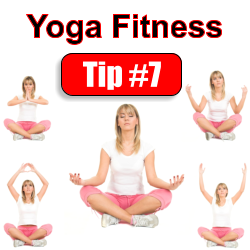Certain functions that we do a lot, like a long-drive commute or sitting in front a computer for extended periods of time, can raise havoc with our posture over time but there are ways to improve your posture. If you find your posture has deteriorated and you tend to slouch when standing upright, certain yoga poses can get you standing tall again.
Here are 6 Yoga Poses That Help Improve Your Posture:
Mountain Pose
The purpose of the mountain pose is to get your body to realize when your back is in perfect alignment with your head, neck and shoulders. This is called the neutral position. If you have difficulty with this pose when first trying it, doing it with your back against a flat vertical wall can help you find your neutral position. Once you know what neutral feels like, you can then do it without using the wall as a prop.
Boat Pose
This pose, called Navasana, strengthens your lower abdominal muscles, which support your lower back and pelvis. While breathing deep, hold the pose for at least 30 seconds.
Locust Pose
Salabhasana is an upper body pose that focuses on strengthening the muscles that hold the shoulder blades in alignment. As the muscles become stronger, they shorten thus pulling your shoulder blades down and back, increasing your vertical posture and alignment.
Bridge Pose
This is one of the best poses to correct for poor posture. It works by strengthening your spine and increasing its flexibility. This pose along with 69 others can be found on these online yoga videos.
Standing Forward Bend
With your hands interlaced behind your back, this pose stretches out the shoulders and hamstrings. To get the maximum benefit from doing this pose, pull your shoulders up by tightening up your shoulder blades as you bend over in half. Once in the bent position, release the pressure on your shoulder blades letting them slide back into place.
Cat-Cow Stretch Pose
While most of the other poses have been done from the standing position, the starting position for this pose is on all fours. By moving your spine through flexion (back down/head up) and extension (back up/head down) you’ll find the ideal neutral position of your spine.
Doing Desk Yoga to Improve Your Posture
Yoga doesn’t have to be done in a studio or at home; there are some modified poses that you can do to improve your posture while seated at your desk:
- Seated Forward Bend – Push your chair back from your desk. While still seated, place both feet flat on the floor. Now interlace your fingers behind your back. Straighten your arms back while folding at the waist, bringing your interlaced hands up and over your back. Rest your chest on your thighs and release your neck. Hold for 15-20 seconds.
- Seated Cat-Cow Stretch – While seated, start by placing both feet flat on the floor. Place your hands on your knees. Now the breathing; on the inhale, arch your back and look up toward the ceiling; on the exhale, round your spine and look down. Repeat for 3-5 breaths.
While yoga doesn’t make you taller, it appears that you are taller by you finding your spine’s neutral position and making you stand more erect. Plus as a side benefit, it can help alleviate neck and lower back pain. So if you find yourself with a poor posture, try doing yoga to improve your posture and your overall health.



